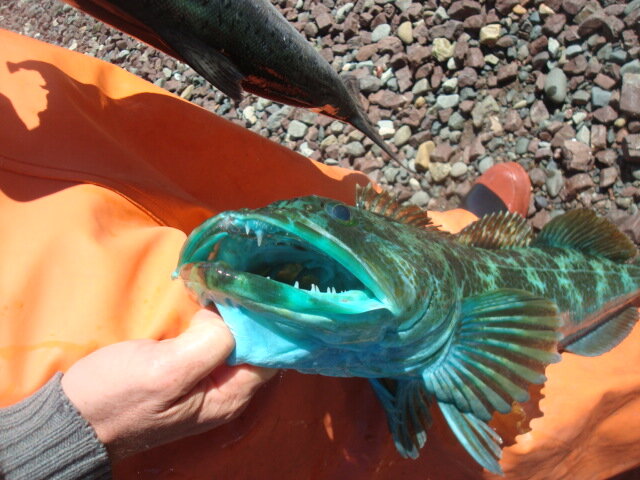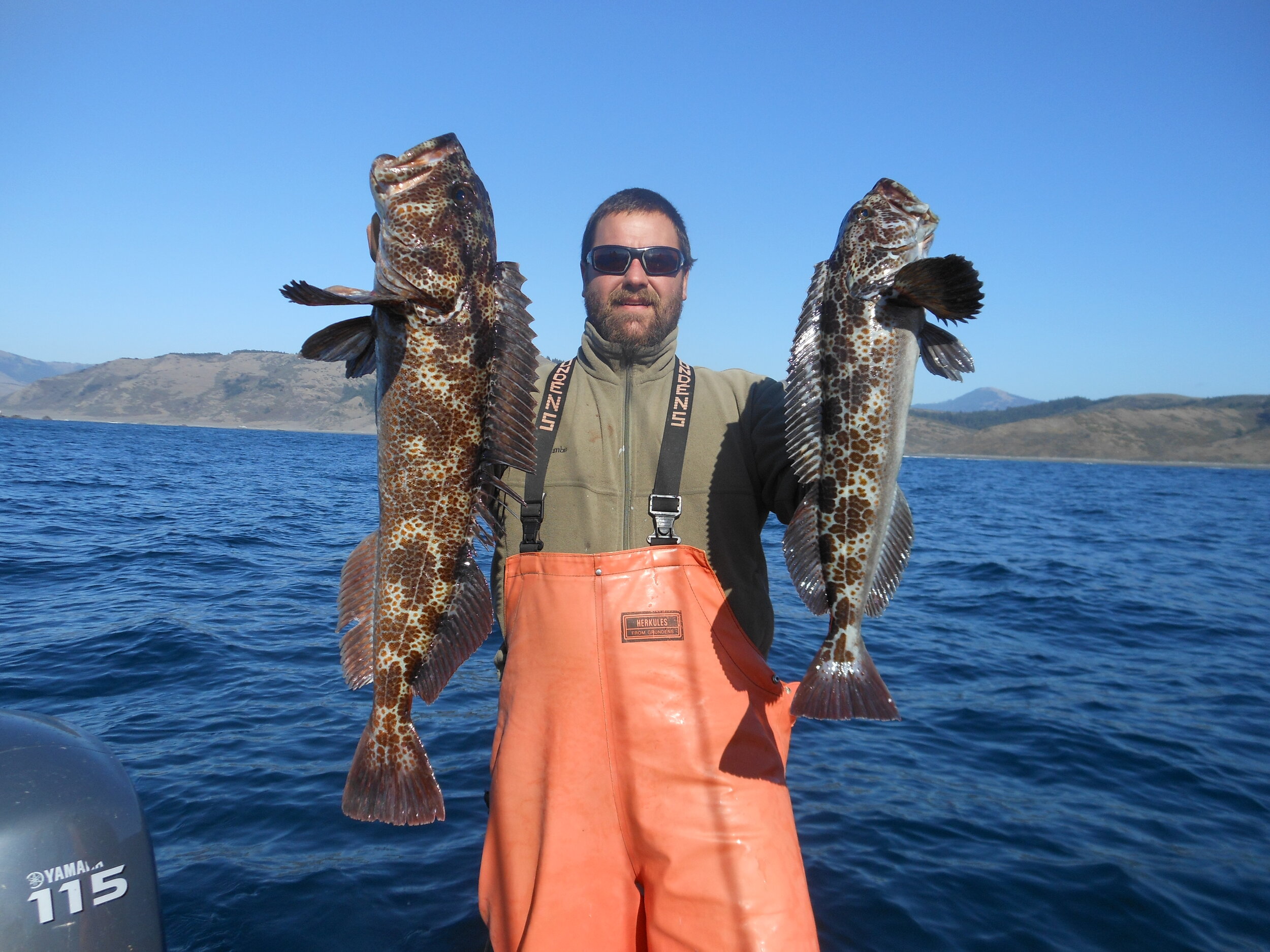Lingcod
Lings are a large predatory fish with big snapping jaws and razor sharp gill rakers. They are unique to the west coast of North America. Yes, sometimes they are bright blue in color (see left). They are every fisherman's favorite hitch-hiker (read below).
Availability: spring, summer, fall.
The Meat
Lingcod is a light, white (or blue!) meat that is great sauteed, baked, broiled etc. If your fillet is smurf-blue do not fret, I did not add blue food coloring to your fish. This is one of the species that I will be providing myself occasionally.
Prep
Lingcod will always arrive filleted, unless you special order a whole one.
Gear and fishery info
Ling cod are caught by bottom trawl, Scottish seines, long lines, and by hook and line. Lingcod are famous for following hooked fish to the surface, and will often bite a fish as the angler reels it, spitting it out moments before capture. This phenomenon is called “hitch-hiking” by local fishermen. If you ever want to see a deckhand move real fast scream “hitchhiker!” next time you're on a party boat, and see what happens. Native Americans were also aware of the hitch-hiking tendency in lings. They would carve fish shaped lures, drop them to the bottom, pull them quickly back to the tule canoe, and spear the lings as they chased the lures to the surface. Lacking an air bladder lings do not die of baro-trauma like many associated species of rockfish when thrown back. So small ones caught and released have a good chance of survival.
#KnowYourFisherman
Our Sablefish is caught by Captain Mark Schmidt, F/V Scrimshaw.
Fish Nerdism 101
Milton Love tells us the following that lings live to at least 36 years old. Females get bigger than males. The livers are high in vitamins A and D.
Health concerns
I have not heard anything negative on lingcod. But they are a large predatory fish that eats a lot of other fish. However, they also eat a lot of stuff like octopus, squid, shrimp etc. Basically, anything that swims or crawls in front of their face. As soon as I find info on mercury levels in lings I will post it here, I would imagine they are about the same as a halibut, but I don't have data to back this up.
Parting Shots
This is simply a very cool fish. The kind of macho creature that certain lunatic fish-heads might get tattooed on their chests and biceps. At the cleaning table in Bodega, a well respected local fisherman told me he had recently removed a whole common murre (a local diving bird about the size of a small duck) from the stomach of a large lingcod. Burp. Excuse me. BTW: if you are catching your own lings, mind the teeth and the razor sharp gill rakers.
Recipes
Facts
Scientific Name: Ophiodon elongatus
Habitat: They are found on the bottom, with most individuals occupying rocky areas at depths of 10 to 100 m (32 to 328 feet).
Diet: Voracious predators, feeding on nearly anything they can fit in their mouths, including invertebrates and many species of fish, such as herring, salmon and Pacific hake, Merluccius productus. One of their favorite foods are smaller octopuses, and they will also readily devour large rockfish.
Size: Up to a size of 152 cm (60 in) with weights of 59 kg (130 lbs).
Range: The North American west coast from Shumagin Islands in the Gulf of Alaska to Baja California, Mexico.








Kay Chun’s Coconut Miso Salmon curry for the win! Thanks, NYT.
Sea Forager member Cathi Sweeney says, “We made this NYT recipe with rockfish the first time, and then with the salmon we got this week. OMG! Even better with the IQF salmon, minus a couple of sashimi bites.”